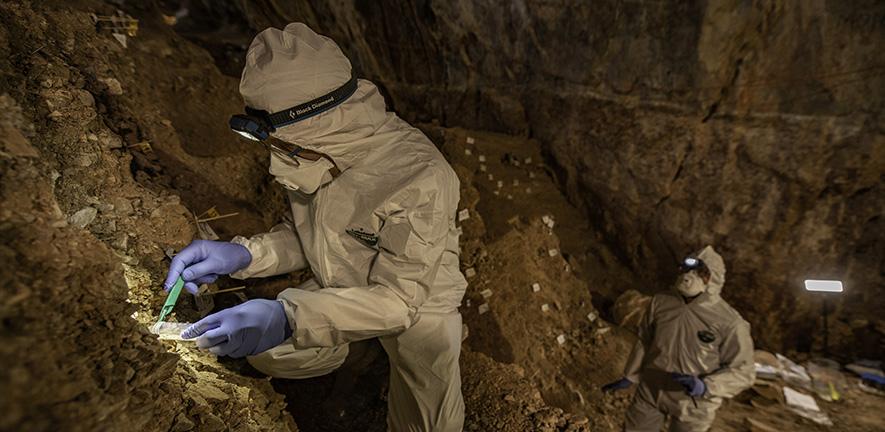
A team of scientists led by Professor Eske Willerslev in the University of Cambridge’s Department of Zoology and the Lundbeck Foundation GeoGenetics Centre, University of Copenhagen, have recreated the genomes of animals, plants and bacteria from microscopic fragments of DNA found in the remote Chiquihuite Cave in Mexico.
The findings have been described as the ‘moon landings of genomics’, because researchers will no longer have to rely on finding and testing fossils to determine genetic ancestry and connections.
The results, published today in the journal Current Biology, are the first time environmental DNA has been sequenced from soil and sediment. They include the ancient DNA profile of a Stone Age American black bear taken from samples in the cave.
Working with highly fragmented DNA from soil samples means scientists no longer have to rely on DNA samples from bone or teeth for enough genetic material to recreate a profile of ancient DNA.
The samples included faeces and droplets of urine from an ancestor of the American black bear, which allowed the scientists to recreate the entire genetic code of two species of the animal: the Stone Age American black bear, and a short-faced bear called Arctodus simus that died out 12,000 years ago.
Professor Willerslev said: “When an animal or a human urinates or defecates, cells from the organism are also excreted. We can detect the DNA fragments from these cells in the soil samples and have now used these to reconstruct genomes for the first time. We have shown that hair, urine and faeces all provide genetic material which, in the right conditions, can survive for much longer than 10,000 years.
“Analysis of DNA found in soil could have the potential to expand the narrative about everything from the evolution of species to developments in climate change – fossils will no longer be needed.”
Chiquihuite Cave is a high-altitude site, situated 2,750 metres above sea level. DNA of mice, black bears, rodents, bats, voles and kangaroo rats was also found. The scientists say that DNA fragments in sediment will now be able to be tested in many former Stone Age settlements around the world.
Professor Willerslev said: “Imagine the stories those traces could tell. It’s a little insane – but also fascinating – to think that, back in the Stone Age, these bears urinated and defecated in the Chiquihuite Cave and left us the traces we’re able to analyse today.”
Media enquiries
Jacqueline Garget
cam.ac.uk


